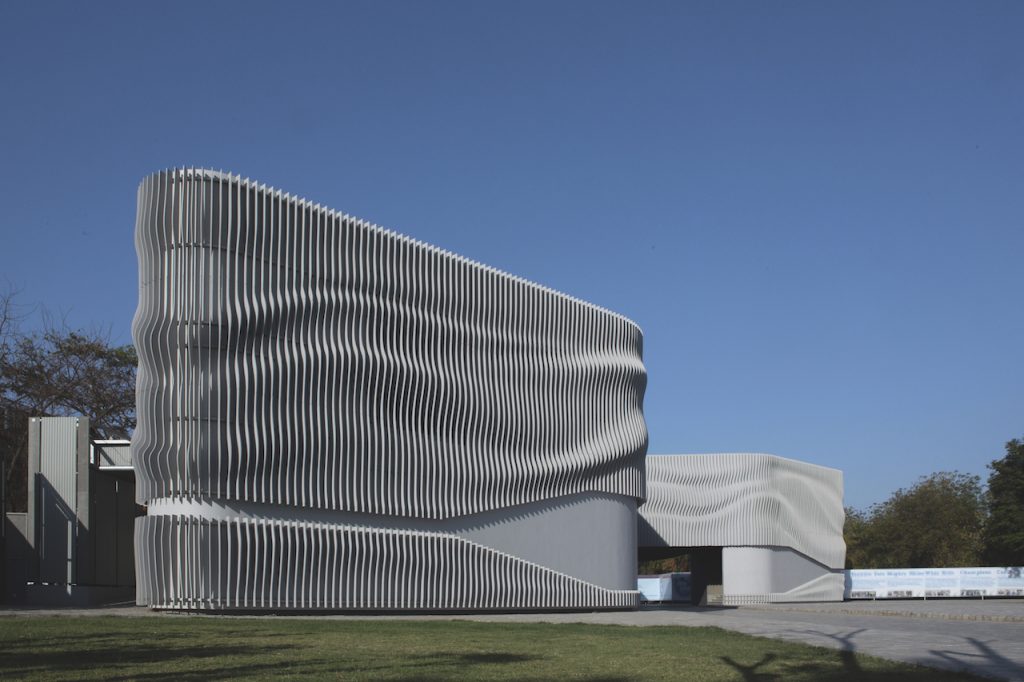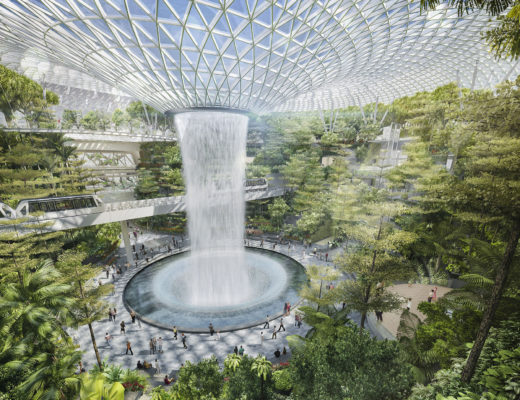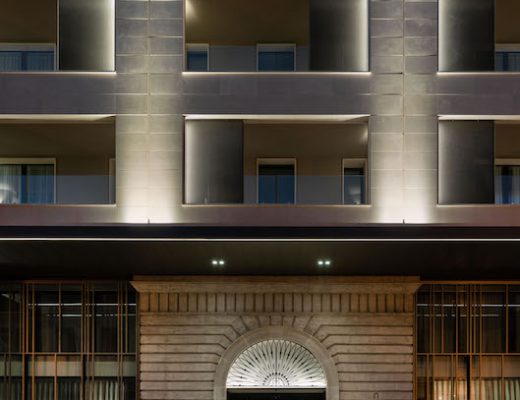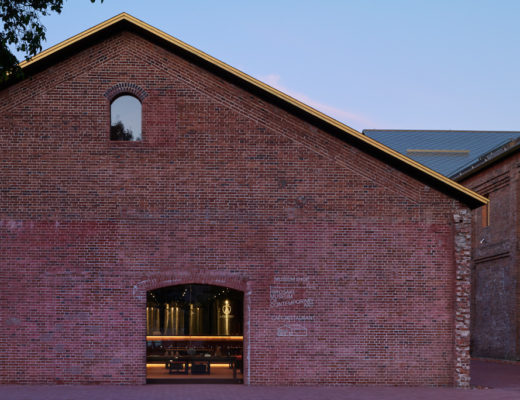From October 18 to 27, Tokyo will be hosting DesignArt, an annual event that explores the intersection of design, art and technology. Taking place at various locations throughout the Japanese capital, for 10 days, the city turns into a museum.
India- and Dubai-based design studio, Apical Reform is exhibiting at the fair for the first time. The studio, led by owner and founder, Amrish Patel and design director Darshan Soni, creates immersive experiences by art and innovation.
Patel tells DE51GN about his latest pieces of design-art which he will be exhibiting in Tokyo. Patel describes the Stingray as a kinetic sculpture that can be looked at for hours together as all the elements of the product are well synchronised and leaves the observer with a calmness. “The abstract kinetic sculpture pays reverence to the majesty of nature and captures the beauty and trance-like movement of the stingray in slow motion,” he says. 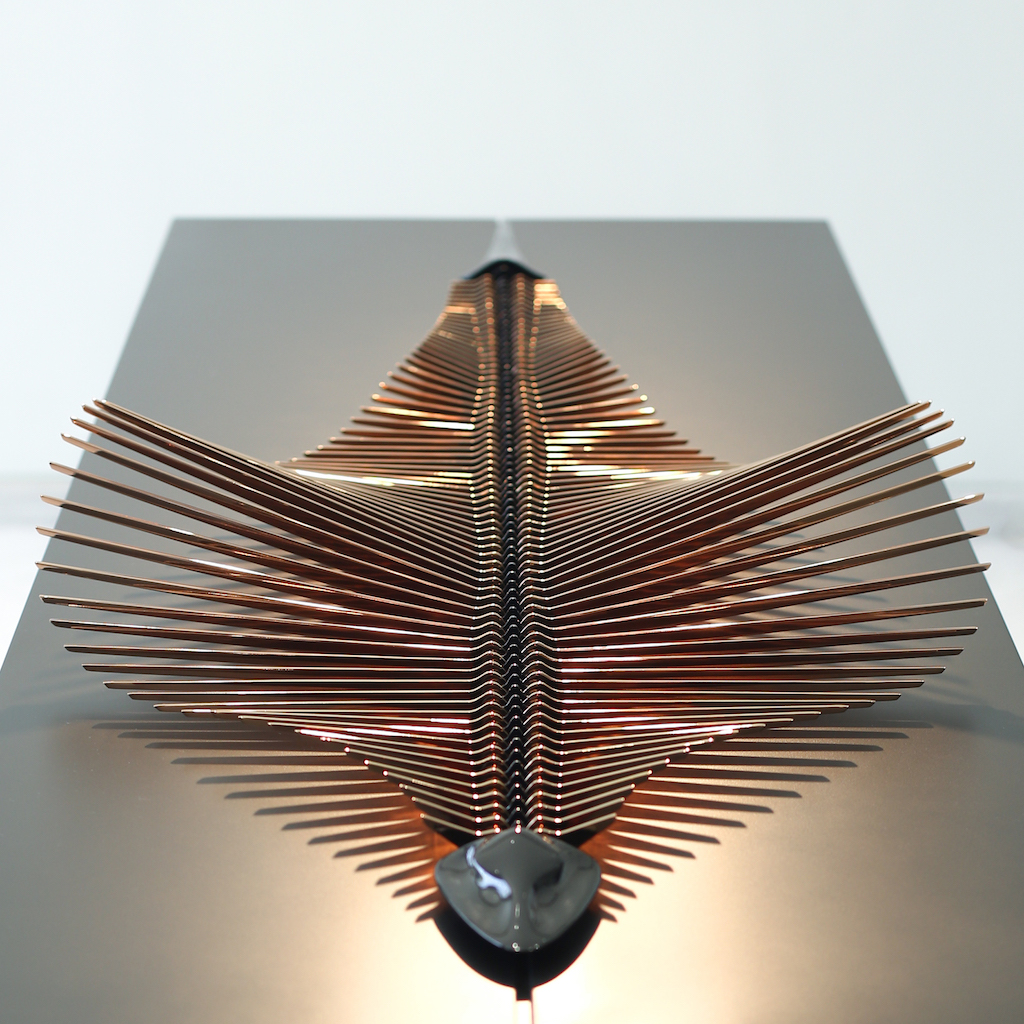 Among the biggest challenges while designing the Stingray, was to get the movement right – not too exaggerated or understated. The mechanism also had to be robust enough to last long and to use the right materials to achieve a flawless finish.
Among the biggest challenges while designing the Stingray, was to get the movement right – not too exaggerated or understated. The mechanism also had to be robust enough to last long and to use the right materials to achieve a flawless finish. 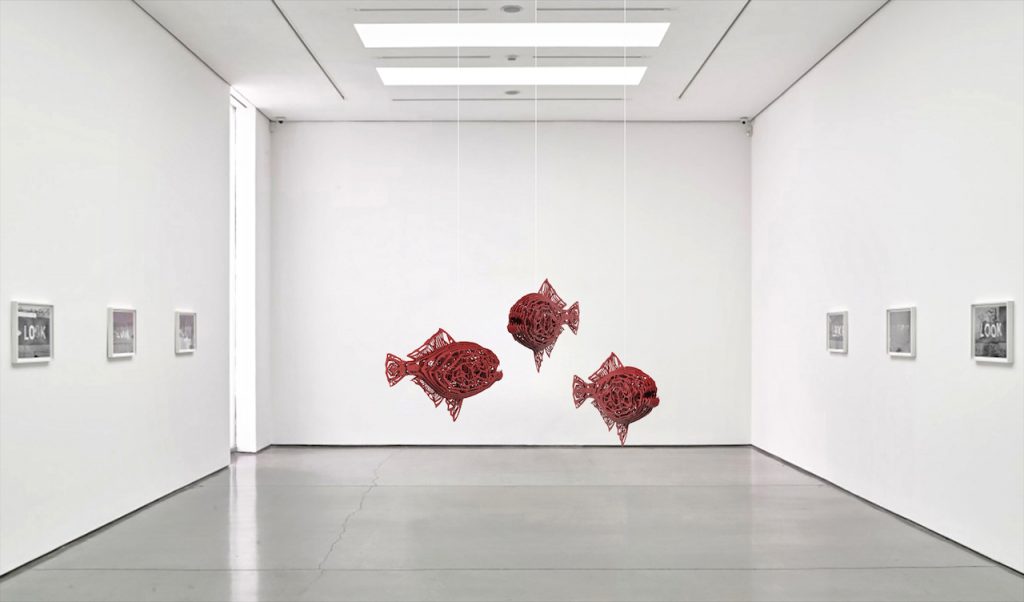
“For the Piranha, the idea was to create a fierce character as it is a very aggressive fish,” shares Patel. “We wanted to design Piranha in such a way that just by looking at the Piranha one would be able to imagine how the fish attacks with ferocity, they strip an animal of its flesh within a matter of minutes, even taking bites out of each other in the process. Using the mechanical machines, we wanted to depict how the body of the fish consumes the prey by breaking them into smaller pieces and in the process churning red into their blood.” 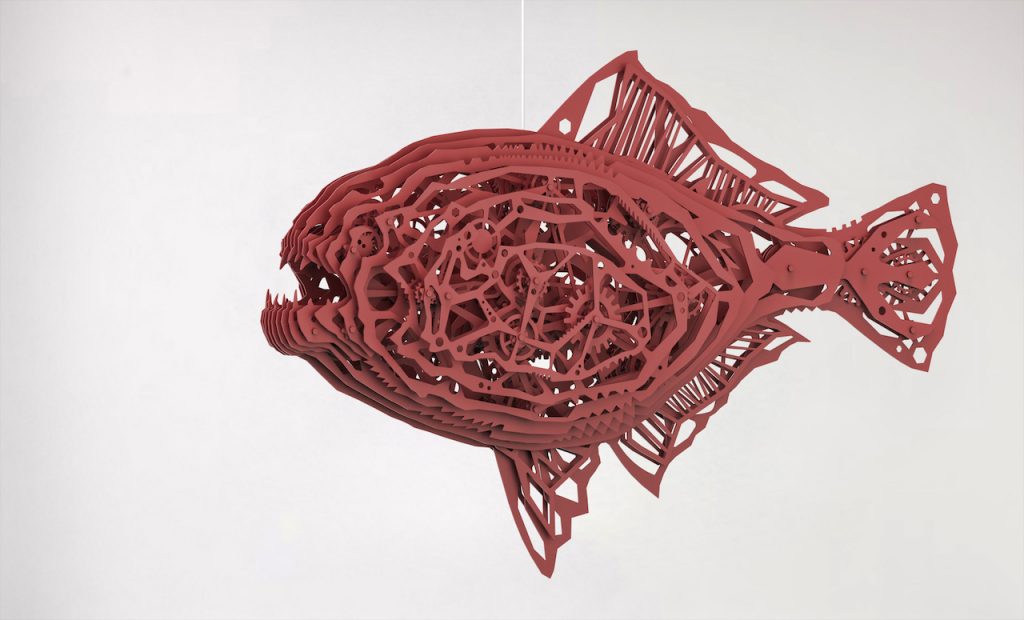
Patel says that essentially it is an artwork that explains the ferocious behavior of the Piranha fish using its colour, design language and form. It also depicts the process of consuming the prey using the bio-mechanical machine, transposed by a metaphorical system of gears, levers, and linkages fabricated in thin sheets of mild steel.
The challenge to design this piece lay in imagining the layers and the overall machine aesthetics. “Being able to see the core of the fish with all the gears and machine elements around was difficult,” says Patel.
“The number of layers increased the overall complexity of the product. We started off by sketching then converting the sketches into digital drawing, making a hardline drawing and distributing them in layers such that we retain the external anatomical contours of the creature.”
The studio’s other well-known installations can be found in Dubai Design District such as the My Dubai City sign, Melt, and Sonuslexica, The year of Zayed artwork and The year of tolerance artwork. It has also collaborated with be the Ithra Museum, Saudi Arabia, as well as kinetic artworks such as ‘Stingray’ and ‘Tornado’ in collaboration with the MB&F MAD gallery.



